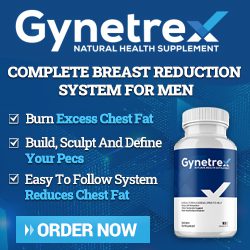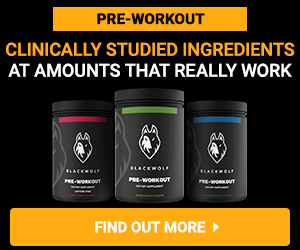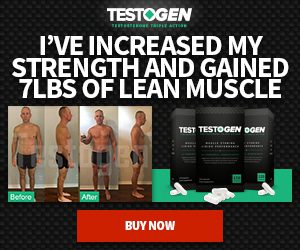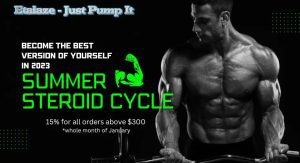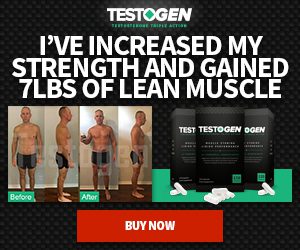Gain Weight
Gaining Lean Muscle Mass Without Gaining Body Fat

Introduction
If you follow some fitness gurus or even a health and fitness magazine, be sure of one thing, you might go crazy! I came across a fitness magazine saying I should take almost 5000 calories daily to build lean muscle.
That's, for a fact freaking CRAZY! If you follow this "junk" advice, be sure to add more weight, and all you'll see in the mirror is a belly full of nothing but fat!
Well, these old techniques are for people who want to gain more muscle tons. Nonetheless, we are in a dynamic biosphere; everything keeps on changing. And we no longer apply the "eat big to get big" approach.
Gain Lean Muscle and Not Gain Fat!
Yes, it would be best if you focused more on that. You were gaining creative, lean muscles. Therefore, to do this, you will have to come up with the perfect workout program.
Even if you plan to work your ASS off trying to get these muscles, your diet must count in. the best dietary plan must support the perfect workout. As is the case, all this could be working right for you, but as you start noticing some significant changes, including gaining weight, something else might be happening.
Jeez!! Are you gaining more fat?
And from my experience, most bodybuilders take this for granted. However, that doesn't seem to bother them since there are results that they are getting, building muscles.
Gaining fat is a slow but gradual process, and as you continue with your program, there is a point where you will reach and the fat-building process outweighs your muscle-building process. By the time you realize it, it is already too late, ruining everything you want.
Must Read: How To Gain Muscle Size And Strength Fast
Gaining Muscles while Minimizing the Fat Gain
It is a principle that we should take into account. We want a situation where we are gaining muscles while minimizing fat gain.
The problem is that most programs out there advocate for some traditional and gluttonous bulking methods. For me, it's too exhausting and demanding; it is downright counter-productivity.
You need a program to help you build lean muscle more effectively and over the long term. A schedule will more precisely target the "lean gains" rather than stuffing yourself with something that may not even work!
And the worst is yet to come.
Assuming that you had a visible muscle ton when you started, you will realize that they are all fading away. For example, if you had abs, by the time you are mid-way through this program, they will have started to fade away.
Even worse, you cannot enjoy the slight comfort of the muscles you are gaining or even enjoy your powers before starting this program.
You are in between, confused and frustrated, not on the program but on yourself! That is what these traditional programs can do to you. We are not to dispute the fact that you are building muscles. That is one thing we can honestly tell visibly. However, you gain too much fat even as you make the muscles.
The more you continue, the worse it gets, and by the time you complete it, trust me, a mirror will be your worst enemy. Instead of getting a sexy, lean, toned, and defined body, the opposite is happening. You are getting bigger and softer.
Is it Necessary to Eat More to Get Lean Muscle?
The traditional method of gaining muscles advocated that if you were not gaining powers fast enough, you were probably not eating enough. Therefore, one must eat as much as one would in a day to compensate for the lack of muscles.
This advice may contain some truth, but the strategy applied is a fuss. However, the crucial thing is that the amount your body needs to build enough muscles will depend very much on the amount which feels enough to meet your body's needs.
What do the traditional methods of gaining muscles didn't that you don't have to overfeed? You need the right amount of food. The amount that feels enough to meet your immediate needs.
Related: Bulking or Cutting – You've got an Eat Big to Get Big, and That is the Truth
The Calorie Intake
How many calories do you need to gain muscles? Most think eating tons is the easiest way to gain energy while burning less. Even if you were to do proper research on the market, you would still find that most programs advocate for the same.
It is virtually impossible to be in a calorie deficit if you take more than 4,000+ calories daily. This strategy is good; for a while, you will realize that you are slowly gaining muscles.
However, it is good to point out that a large calorie surplus is not an excellent strategy for building muscles. The problem is that gaining too much fat does more harm than good. Overeating accelerates gaining fat which then accelerates fat storage. Overall slows down muscle growth. There is a downside to a lot of calorie intake.
Related Article: How Many Calories A Day To Eat To Build Muscle?
The Downside of too much Calorie Intake
You realize that as the body fat rises, the insulin level in the body drops significantly. Therefore, the body becomes resistant to some of its signals, decreasing the ability to burn fat; consequently, the likelihood of you gaining weight increases significantly.
You must understand that the better your body responds to insulin, the better your chances of doing many other things, like building lean muscle and resisting fat gain.
Also, when the body fat rises, the testosterone level drops while the estrogen levels rise, and we all know the significance of the testosterone hormone!
Conclusion:
Too much food increases the chances of building fat in the body, which is not a good sign of muscle growth. Therefore, you must carefully consider your consumption and regulate your calorie intake to gain lean muscles without gaining fat.
However, ensuring that your diet is inconsistent in the energy needed to build your muscles effectively is good.
Bodybuilding
Demystifying Hypertrophy Training

Hypertrophy training, often referred to as bodybuilding training, is a method focused on increasing muscle size and definition through targeted exercises and specific training techniques. Professional bodybuilders have mastered the art of hypertrophy training to sculpt their bodies into peak physical condition.
At its core, hypertrophy training involves lifting weights at a moderate to high intensity for a moderate number of repetitions. The goal is to create micro-tears in the muscle fibers, which then repair and grow stronger and larger during the recovery process. This leads to muscle hypertrophy or an increase in muscle size.
Understanding the basics of hypertrophy training involves knowing how to manipulate variables such as sets, reps, rest periods, tempo, and intensity. By adjusting these factors, individuals can tailor their workouts to target specific muscle groups and achieve optimal results.
Proper nutrition and adequate rest are also crucial components of hypertrophy training as muscles need sufficient fuel and time to recover and grow. Consistency in training and adherence to a well-rounded program are key pillars in unlocking the full potential of hypertrophy training.
Must Read: The Ultimate Chain and Plate Curls for Pumping Biceps
By demystifying hypertrophy training and embracing its principles with dedication and focus, individuals can effectively work towards achieving their desired physique goals while enhancing overall strength and endurance.
Principles of Hypertrophy Training
When you engage in strength training, you put strain on your muscles. This stress prompts the body to repair and adapt, resulting in an increase in muscle fibers. Here are the basics about this form of training you need to familiarise with:
Training Frequency
For new bodybuilders, a frequency of 3-4 times per week is often recommended to allow for sufficient recovery between sessions. Professional bodybuilders may train more frequently, sometimes up to 5-6 times per week, as their bodies have adapted to higher training volumes over time.
Intensity and Volume: New bodybuilders typically start with moderate intensity (around 65-75% of their one-rep max) and moderate volume (3-4 sets of 8-12 reps per exercise). Professional bodybuilders often incorporate higher intensities (75-85% of one-rep max) and higher volumes (4-6 sets of 8-15 reps per exercise) to continue stimulating muscle growth.
Exercise Selection
Both new and professional bodybuilders focus on compound exercises (e.g., squats, deadlifts, bench press) that target multiple muscle groups simultaneously to maximize muscle recruitment and overall hypertrophy. However, professionals may incorporate more isolation exercises to target specific muscles or muscle groups that need extra attention.
Progressive Overload
Both groups prioritize progressive overload, which involves gradually increasing the weight, reps, or sets over time to continue challenging the muscles and promoting growth. This can be achieved through methods such as increasing resistance, shortening rest periods, or varying exercise techniques.
Nutrition
Both new and professional bodybuilders emphasize the importance of nutrition for muscle growth and recovery. This includes consuming an adequate amount of protein to support muscle repair and synthesis, as well as sufficient carbohydrates and fats for energy and overall health.
Rest and Recovery
Adequate rest and recovery are crucial for hypertrophy training. Both new and professional bodybuilders prioritize getting enough sleep (7-9 hours per night) and incorporating rest days into their training schedules to allow muscles to repair and grow.
Supplementation
While both new and professional bodybuilders may use supplements to support their training and nutrition goals, professionals may have more sophisticated supplementation protocols tailored to their specific needs and goals. We recommend supplements such as protein powders, creatine, branched-chain amino acids (BCAAs), and pre-workout formulas.
Monitoring and Adjustments
Professional bodybuilders often closely monitor their progress through measurements such as body weight, body composition, and strength levels. Based on these assessments, they make adjustments to their training, nutrition, and supplementation protocols to continually progress towards their goals.
Arnold Schwarzenegger's Hypertrophy Workout Routine
Arnold Schwarzenegger's volume workout is a legendary approach to hypertrophy training that he popularized during his bodybuilding career. Here's an explanation of how his workout relates to hypertrophy training:
High Volume
Schwarzenegger's training program was characterized by high volume, involving a large number of sets and reps per workout. This high volume stimulates muscle growth by subjecting the muscles to prolonged tension and metabolic stress, both of which are key factors in hypertrophy.
Multiple Sets and Reps
Each exercise in Schwarzenegger's workout typically included multiple sets (often 4-5 sets) with a moderate to high number of reps (8-12 reps). This approach allows for ample time under tension, which is essential for stimulating muscle growth and hypertrophy.
Compound and Isolation Exercises
Schwarzenegger's workout included a combination of compound exercises (e.g., squats, bench press, deadlifts) and isolation exercises (e.g., bicep curls, tricep extensions) to target various muscle groups from different angles. Compound exercises help to maximize muscle recruitment, while isolation exercises allow for targeted muscle stimulation and hypertrophy.
Frequency
Schwarzenegger typically trained each muscle group 2-3 times per week, allowing for sufficient frequency to stimulate muscle growth while also providing adequate recovery time between sessions. This frequency helps to maximize hypertrophy by consistently exposing the muscles to growth-inducing stimuli.
Intensity Techniques
Schwarzenegger often incorporated intensity techniques such as drop sets, supersets, and forced reps into his workouts to further increase the intensity and stimulate muscle growth. These techniques help to push the muscles beyond their normal limits, triggering adaptations that lead to hypertrophy.
Periodization
Schwarzenegger employed periodization principles in his training, alternating between phases of higher volume and lower volume to prevent plateaus and continue making progress. This periodization strategy helps to optimize muscle growth by varying training stimuli over time.
Mind-Muscle Connection
Schwarzenegger emphasized the importance of the mind-muscle connection, focusing on contracting and feeling the target muscles working during each repetition. This approach helps to maximize muscle fiber recruitment and engagement, enhancing the effectiveness of each exercise for hypertrophy.
Nutrition and Recovery
In addition to his training program, Schwarzenegger paid close attention to his nutrition and recovery strategies to support muscle growth and hypertrophy. Adequate protein intake, proper hydration, and sufficient rest are essential components of any hypertrophy-focused training program.
Overall, Schwarzenegger's volume workout is a comprehensive approach to hypertrophy training that incorporates high volume, frequency, intensity techniques, and periodization to maximize muscle growth and achieve an impressive physique.
Also Read: Why Trenbolone Remains A Beast In The Market
10 Groups of Athletes That Can Benefit from Hypertrophy Workouts
We have prepared for you 10 groups of athletes that should consider hypertrophy training
1. Combat Sports Athletes
Martial artists, boxers, and other combat sports athletes can enhance their power and endurance through hypertrophy training.
2. Track and Field Athletes
Sprinters, jumpers, and throwers can improve their explosive strength by including hypertrophy training in their regimen.
3. Football/Soccer Players
Both American football players and soccer players can benefit from hypertrophy training to increase muscle mass and strength.
4. Gymnasts
Building lean muscle mass through hypertrophy training can help gymnasts improve their strength-to-weight ratio for better performance.
5. Swimmers
Swimmers can enhance their power in the water by incorporating hypertrophy exercises to strengthen key muscle groups.
6. Cyclists
While endurance is crucial for cyclists, adding hypertrophy training can boost leg strength and overall performance on the bike.
7. Basketball Players
Building muscle through hypertrophy training can improve basketball players' agility, jumping ability, and overall athleticism on the court.
8. CrossFit Athletes
CrossFit enthusiasts looking to excel in competitions can benefit from hypertrophy training to increase overall strength and muscular endurance.
9. Triathletes
Incorporating hypertrophy exercises into triathletes' routines helps prevent injuries by strengthening muscles that support joints during long-distance races.
10. Powerlifters
While powerlifting focuses on maximal strength lifts, including some hypertrophy work can aid in building a solid muscular foundation for lifting heavy weights more efficiently.
By tailoring a specific hypertrophy program to suit each group's athletic needs and goals, these athletes have the opportunity to optimize their performance levels while reducing the risk of injury associated with repetitive movements in sports-specific activities.
Final Thoughts
By understanding the underlying principles of progressive overload, volume, intensity, and frequency, individuals can tailor their training programs to effectively stimulate muscle growth. Whether you're a novice or a seasoned athlete, hypertrophy training offers a structured framework for optimizing muscle hypertrophy and sculpting a physique that reflects dedication, consistency, and strategic planning.
Embracing the science behind hypertrophy training empowers you as an individual to surpass limitations, break plateaus, and unlock their full potential in pursuit of their fitness aspirations. With proper guidance, commitment, and perseverance, anyone can harness the transformative power of hypertrophy training to sculpt a stronger, more resilient, and aesthetically pleasing physique.
Related Article: Post Cycle Therapy Vs. B&C: Which is Best for You?
Bodybuilding
Calorie Dumping: A Bodybuilder’s Guide

"Calorie dumping" in bodybuilding refers to a strategy where an individual consumes a large number of calories in a single meal, often following a period of low-calorie intake.
This practice is believed to support muscle growth by providing a surplus of energy and nutrients.
The idea is that after a period of restricted calorie intake, the body becomes more efficient at utilizing nutrients, making it more receptive to absorbing and utilizing the surplus calories in a short period.
However, this approach may not suit everyone and should be approached cautiously as it can lead to discomfort and potential digestive issues.
Calorie dumping, also known as refeeding or cycling calories, is sometimes preferred by bodybuilders to help prevent metabolic adaptation and aid in breaking through plateaus.
By occasionally consuming higher calorie levels, they aim to boost metabolism, replenish glycogen stores, and maintain hormone balance for better muscle growth and fat loss in the long term.
Bodybuilders focus on controlled nutrition plans to optimize muscle growth and minimize fat gain. However, occasionally, you might increase the calorie intake temporarily before an intense workout or competition to boost energy levels, but this isn't considered calorie dumping in the traditional sense.
ALSO READ: Your Guide to Become A Successful Personal Trainer
Long-term and Short-term Benefits of Calorie Dumping
Short-term benefits include replenishing glycogen stores, boosting metabolism, and providing mental relief from a strict diet.
Also known as a "refeed" or "cheat day," bodybuilders do calorie dumping for several long-term reasons:
Best Foods for Calorie Dumping
Beginners
Tren Cycle for Beginners

Bodybuilders must have a clear approach to the tren cycle for beginners. Trenbolone is a potent steroid that should be cautiously and properly researched.
For beginners, starting with a lower dosage and gradually increasing it over time is recommended. This allows the body to adjust to the effects of trenbolone and helps minimize the risk of potential side effects.
Start With A Plan
It is also important to have a well-structured cycle plan in place. This includes determining the cycle duration, dosages, and frequency of administration. Consulting with a knowledgeable healthcare professional or experienced trainer can provide valuable guidance in creating an effective cycle plan.
Additionally, proper nutrition and training protocols are essential during a trenbolone cycle. A balanced diet of protein, carbohydrates, and healthy fats will support muscle growth and recovery. Combined with an appropriate workout routine tailored to individual goals, this can maximize the benefits of the trenbolone cycle. Remember that safety should always be a priority when using any steroid.
Educating oneself about potential side effects, risks, and proper usage guidelines is crucial before embarking on a trenbolone cycle or any other steroid regimen. You're right! Proper nutrition and training protocols are crucial when using trenbolone or other steroid. A balanced diet is important to provide the necessary nutrients for muscle growth and recovery. Including sources of protein, carbohydrates, and healthy fats can support your body's needs during the cycle.
Additional Reading:: Supplemental Breast Milk for Bodybuilders: The Secret Behind It
Tailor Your Training Routine To Individual Goals
In terms of training, having an appropriate workout routine tailored to your individual goals is key. This can help optimize the benefits of the trenbolone cycle by ensuring that you're targeting specific muscle groups and incorporating exercises that promote strength and hypertrophy.
Dig Out More Information
However, it's important to prioritize safety when using any steroid. Before starting a trenbolone cycle or any other steroid regimen, educating yourself about potential side effects, risks, and proper usage guidelines is essential. This will help you make informed decisions regarding dosage, duration of use, and post-cycle therapy (PCT) to minimize potential risks.
Furthermore, consulting with a healthcare professional or qualified fitness expert with steroid experience can provide valuable guidance throughout your journey. They can monitor your progress, address any concerns or questions you may have. Always remember that responsible use of steroids involves thorough research, consideration of potential risks/benefits ratio, and being mindful of your overall health and well-being.
The Frequency of Tren Cycle for Beginners
When it comes to cycling Trenbolone, there are several factors to consider. The frequency of the Tren cycle for beginners can vary depending on individual goals, experience level, and tolerance to the compound. Typically, Trenbolone cycles range from 8 to 12 weeks in length. However, some advanced users may extend their cycles up to 16 weeks.
It's important to note that Trenbolone is known for its strong side effects, including potential cardiovascular strain, suppression of natural testosterone production, and liver toxicity. Therefore, using this steroid responsibly and following proper cycling protocols is crucial.
Many experienced users recommend starting with a lower dosage during the first cycle to assess how your body responds to Trenbolone. Incorporating post-cycle therapy (PCT) after completing a Trenbolone cycle is also advisable to help restore hormonal balance and minimize potential side effects.
Ultimately, beginners' frequency of the tren cycle should be determined based on individual goals, understanding of the compound's risks and benefits, and consultation with a knowledgeable healthcare professional or experienced steroid user.
Tren Cycle for Beginners Steps
When using trenbolone (tren) for beginners, it is important to understand the step-by-step procedure clearly. Tren is a powerful anabolic steroid that should be cautiously approached, especially for those new to using performance-enhancing substances.
Before starting a tren cycle, it is essential to consult with a healthcare professional or an experienced fitness expert who can provide guidance and monitor your progress throughout the cycle. They can help determine if you are ready for this level of supplementation and ensure your safety.
The step-by-step procedure for a tren cycle typically involves the following:
1. Research and Education: Thoroughly research tren and its potential benefits, risks, and side effects. Understand how it interacts with your body and what precautions must be taken.
2. Establish Goals: Clearly define your goals for using tren, whether it's gaining muscle mass, increasing strength, or improving athletic performance. This will help guide your dosage and duration of the cycle.
3. Dosage Determination: Start with a low dosage to assess how your body reacts to tren. Beginners start with around 50-100mg per week, split into several smaller doses.
4. Cycle Duration: A typical beginner's tren cycle lasts 8-12 weeks. It's important not to exceed this timeframe as prolonged use can increase the risk of side effects.
5. Supportive Supplements: Consider incorporating supplements such as liver support agents or testosterone replacement therapy (TRT) during your cycle to mitigate potential adverse effects on liver function or natural testosterone production.
6. Monitoring Progress: Regularly monitor your progress during the cycle through objective measures such as body composition analysis, strength gains, and overall well-being.
7. Post-Cycle Therapy (PCT): After completing the Tren cycle, implement an appropriate post-cycle therapy protocol to help restore natural hormone production and minimize any potential side effects associated with discontinuing Tren use.
Where to Source Your Tren
When purchasing trenbolone, it is important to prioritize safety and legality. Trenbolone is a controlled substance in many countries, and its sale without a prescription is prohibited. Therefore, being cautious and ensuring you purchase from a reputable source is crucial.
One of the most reliable options for buying trenbolone is through licensed pharmacies with proper prescriptions, such as Etalaze.biz. These pharmacies adhere to strict regulations and quality control measures, ensuring you receive genuine products.
However, it's important to note that using trenbolone for non-medical purposes, such as bodybuilding or performance enhancement, may not be legal in some countries. In such cases, attempting to purchase trenbolone from underground or illicit sources can pose serious risks to your health and legal consequences.
It is always recommended to consult with a healthcare professional or an authorized medical practitioner who can guide you on the appropriate usage and legal avenues for obtaining trenbolone based on your specific circumstances.
Tren Cycle for Beginners Take Away
Beginner bodybuilders need to understand the approved dosage guidelines when using trenbolone, a powerful anabolic steroid. Trenbolone is known for its potency and effectiveness in promoting muscle growth and strength gains. However, it is crucial to cautiously approach Tren Cycle for Beginners due to its strong nature.
For beginners, starting with a lower dosage of trenbolone is generally recommended to assess their tolerance and response to the compound. The approved dosage for beginner bodybuilders typically ranges from 50mg to 100mg per week. This conservative approach allows individuals to gradually introduce trenbolone into their system while minimizing the risk of potential side effects.
It is important to note that every individual may respond differently to trenbolone, and factors such as age, weight, fitness level, and overall health should be considered when determining the appropriate dosage. It is always advisable for beginners to consult with a knowledgeable healthcare professional or experienced coach who can provide personalized guidance based on their specific circumstances.
Additionally, regardless of experience level, it is crucial for all users of trenbolone or any other anabolic steroid to prioritize proper cycle support and post-cycle therapy (PCT) protocols. These measures help mitigate potential side effects and ensure a safer and more effective experience with trenbolone.
In conclusion, when using trenbolone as a beginner bodybuilder, adhering to approved dosage guidelines ranging from 50mg-100mg per week is essential. Consulting with healthcare professionals or experienced coaches can provide valuable insights tailored to individual needs. Prioritizing cycle support and PCT protocols further contributes to optimizing safety and effectiveness during the usage of this potent anabolic steroid.
-

 Steroids2 years ago
Steroids2 years agoVOX Testing: Why Bodybuilders Must Have It Tested Regularly
-

 Steroids2 years ago
Steroids2 years agoShavers and Other Body Grooming Equipment for Bodybuilders In 2023
-

 Steroids2 years ago
Steroids2 years agoChatGPT and Other Avenues to Find Great Bodybuilding Coaches
-

 Steroids2 years ago
Steroids2 years agoBest Oil Recommendations Before Competition for Subtle Shimmer
-

 Steroids2 years ago
Steroids2 years agoPowerlifting Vs Power Building: Find Out the Big Difference and When to Shift Between the Two
-

 Nutrition1 year ago
Nutrition1 year agoEverything Nutritional Food: What’s Too Much Or Too Little
-

 Anabolic Steroids1 year ago
Anabolic Steroids1 year agoLegality of Anabolic Steroids In Latin America
-

 Bodybuilding Products12 months ago
Bodybuilding Products12 months agoTelmisartan In Bodybuilding: An Expert’s Advice
-

 Beginners2 years ago
Beginners2 years agoTren Cycle for Beginners
-

 Bodybuilding1 year ago
Bodybuilding1 year agoList of FDA-Approved Peptides
-

 Bodybuilding2 years ago
Bodybuilding2 years agoCompetition Prep Cycle for Pro Bodybuilders
-

 Bodybuilding1 year ago
Bodybuilding1 year agoChia Seeds in A Bodybuilder’s Diet: An Expert’s Advice
-

 Anabolic Steroids11 months ago
Anabolic Steroids11 months agoHow Much Do You Know About B-AET? A Fat Burner You’ve Been Missing
-

 Bodybuilding7 months ago
Bodybuilding7 months agoPrimal Movements: Our Ultimate Guide for Maximum Results
-

 Steroids11 months ago
Steroids11 months agoAnadrol Cycle: Benefits, Doses, Alternatives, etc.
-

 Anabolic Steroids8 months ago
Anabolic Steroids8 months agoJoint Stiffness: How to Manage It While on AAS
-

 Product Reviews10 months ago
Product Reviews10 months agoTop Vitamins for Skin Health
-

 Steroids9 months ago
Steroids9 months agoOmnitope (Oxytocin)
-

 Bodybuilding1 year ago
Bodybuilding1 year agoHow Much Is Too Much Cardio? Understanding Heart Rate Zones
-

 Bodybuilding8 months ago
Bodybuilding8 months agoHow Effective is Bone Broth for Recovery?
-

 Steroids10 months ago
Steroids10 months agoMajor Bodybuilding Peptides Explained
-

 Bodybuilding9 months ago
Bodybuilding9 months agoHormone Replacement Therapy (TRT) Cycle Guide
-

 Steroids8 months ago
Steroids8 months agoSleeping Positions for Effective Muscle Recovery
-

 Anabolic Steroids1 year ago
Anabolic Steroids1 year agoStart The New Year Strong With These Tips
-

 Bodybuilding10 months ago
Bodybuilding10 months agoHere Is How To know Your MRV (Maximum Recoverable Volume)














